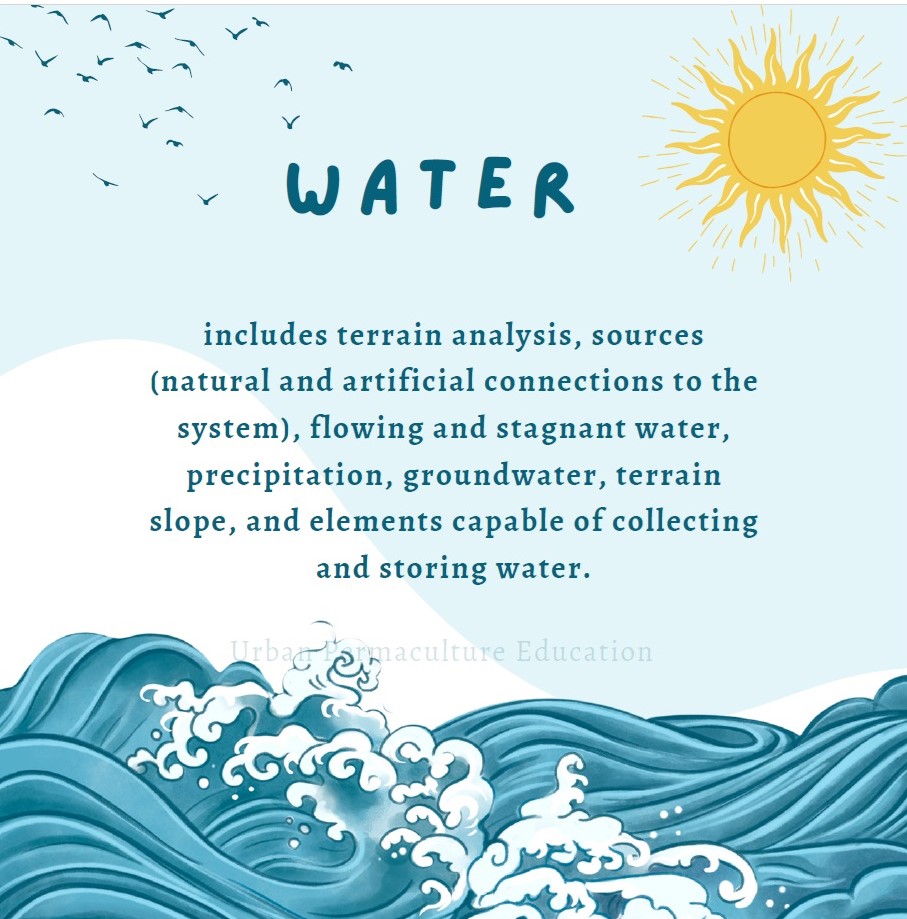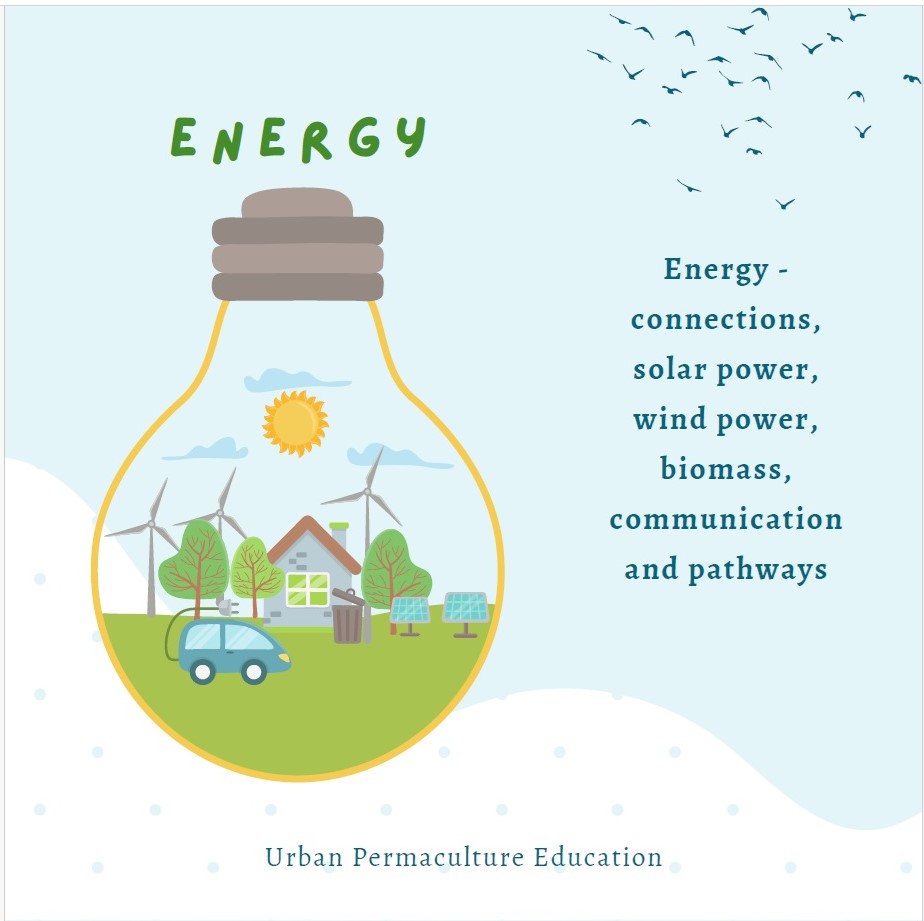Duration: 3 sessions of 45 minutes
Understanding the significance of conducting various types of analysis before initiating the design process is crucial. This involves analyzing five elements through environmental observation, as well as utilizing different methods of data collection such as maps, existing physical and online resources, and research techniques.
Permaculture design involves a complex process that includes respect for permaculture ethical principles, design principles, and the application of specific tools in order to create a design that is effective and meets the needs of the user. Various methods help us to understand the complexity of the environment we are designing in order to create a comprehensive design.
The most frequently used tools for permaculture design are: analysis of 5 elements, sector analysis, zoning, functional analysis, and design based on nature’s patterns. The analysis of 5 elements represents energy, water, air, soil/food, and society. We not only analyze the existing situation, but also the potential the analysis area offers us, and our own needs to satisfy them with the final design.
Permaculture was created as a response to global crises, illustrated through the analysis of these elements, and our goal is to offer solutions to identified problems at both local and global levels. By conducting this analysis, we aim to connect collected data into systems during the design process.
During the analysis, we should take the following into account:
Analysis of the terrain, sources (natural and artificial connections to the system), liquid and stagnant water, precipitation, underground water and the slope of the terrain and elements that can collect and store water
Needs: water for household and irrigation
Potential problems: disposal of black and grey water

Winds – direction, strength, air flow, air quality, smells
Potential problems: air pollution, noise

Type and characteristics of the soil, existence of organic matter and biomass, plants
Potential problems: pollution, soil unsuitable for one of the purposes (gardening, building, or making a lake)

Connections, sun, wind, biomass, communication and roads

Who are the users and with whom are they connected, who is needed for the realization of the goal, the neighbourhood, the animal world (domestic and wild animals), organizational structure and relationships, ownership and management.

Emphasize the importance of conducting quality analysis before initiating the design and implementing it. Highlight the complexity of the environment and the necessity of utilizing this approach to gather data beneficial for the design process.
Objective: To determine the necessary requirements for achieving a specific goal, such as establishing a school garden, a vertical garden, or a school cooperative.
Question for students: What do we need to ensure in order to successfully achieve our goal and ensure its functionality?
Participants, divided into groups of 4-6 members, will collectively list essential needs and conditions for realizing the goal and ensuring its successful implementation on a shared sheet of paper.
Briefly introduce the lesson topic, which involves analyzing the 5 elements, and draw a “permaculture flower” on the board. Write the 5 elements in the petals of the flower, leaving the middle empty for later use to review permaculture ethics.
A representative from each group will present the terms they have collectively written, and in discussion with the other students, these terms will be recorded next to the corresponding petal (or more) to which they refer. This way, we will document all concepts and needs presented and collectively consider if anything has been missed. Detailed analysis of the needs is necessary in preparing the lesson to supplement the students’ suggestions.
Let’s conclude that we have conducted a needs analysis, categorized according to 5 elements, which we will further analyze in the specific field we aim to design.
Objective: Our objective is to familiarize ourselves with the terrain we intend to design and to utilize all our senses to gather information from the space. If possible, we will visit the terrain we plan to design. Before heading out to the field, we will input the grouped needs from the previous exercise into the needs section of a table. This table is organized so that each of the 5 elements has three sections: needs, situation on the ground, and potentials/obstacles.
The students will be divided into groups and in the remaining sections of the table (prepared paper version), they will record the data collected in the field. Despite the fact that the same needs and the element’s name will guide the students to search for things and phenomena that address the needs, we will instruct them to record as much information as possible obtained by all senses (sight, hearing, smell, touch) during the analysis. Furthermore, students will create a map of the terrain and illustrate their observations with a legend and comments.
We will also introduce students to other methods of gathering information, such as reading a map, analyzing data such as sunshine and rainfall, wind patterns, and conducting interviews with individuals who can provide us with valuable information that we cannot obtain on our own.
Objective: Compare the needs with the current situation and determine which needs can be met under existing conditions, and which require additional activities and the introduction of new elements. We will analyze the collected data and mark in green the elements that are useful for meeting certain needs, and link them to the needs they fulfill. For needs that cannot be satisfied with existing elements, or for which there are obstacles to satisfaction, we will propose solutions using the current situation or by introducing new elements. In the “potentials/obstacles” column, we will record our observations and indicate how we will utilize a certain potential or find a solution for a specific obstacle.